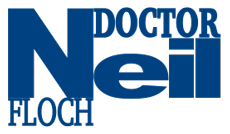THE PROCEDURE
Dr. Neil Floch is recognized as one of the most prominent surgeons in the country that is performing the Heller Myotomy. He has written and published several book chapters and papers on this subject that other surgeons are using as reference and guidance in performing the procedure and treating their patients.
This surgical procedure is used to treat achalasia, a disorder in which the lower esophageal sphincter fails to relax properly and causes food and liquids to have difficulty reaching the stomach. Almost all patients with achalasia have dysphagia (difficulty swallowing) of solids, and 66% have dysphasia of liquids. Patients initially feel heaviness or constriction in the chest when under stress. Food itself cause some stress, eventually resulting in obstruction. Retrosternal (behind the breast bone) chest pain may occur in up to 50% of patients but improves over time. Patients eventually become afraid to eat as symptoms of dysphasia, chest pain, and regurgitation of food develop. Regurgitation of undigested food occurs in 60% to 90% of patients. Most patients maintain their nutritional status with little weight loss. Pneumonia is common in elderly patients from the regurgitation and aspiration of food.
Five or six small incisions are made in the abdominal wall and laparoscopic instruments are inserted. Our surgeons use small incisions to enter the abdomen. The laparoscope, a thin telescope-like instrument, is connected to a tiny camera and then inserted through the small incision. This enables our surgeons to have a magnified image of the patient’s internal organs projected on high definition television screens in the operating room. This affords our surgeons the opportunity of having a better view of internal organs in greater detail than the traditional open procedure provides. The abdomen is inflated with gas, causing it to expand, and thereby allowing our surgeons to view the abdominal cavity and perform the procedure. The myotomy is a lengthwise cut along the esophagus, starting above the lower esophageal sphincter or LES and extending down a little way onto the stomach. The myotomy only cuts through the outsider muscle layers of the esophagus which are squeezing it shut. The inner mucosal layer remains intact.
Food can easily pass downward after the myotomy has cut through the lower esophageal sphincter, but stomach acid can easily reflux upward. For that reason this surgery is often combined with partial fundoplication for the purpose of reducing the incidence of postoperative acid reflux.
This surgery usually eliminates most of the achalasia symptoms but not the underlying cause of it. However, it does, greatly improve the ability for the majority of patients to eat and drink. It is a long-term treatment and considered the definitive treatment for achalasia. Most patients will not require any further treatment. However, there are instances when some might require additional treatment somewhere further down the road.
BENEFITS OF THE HELLER MYOTOMY
- Ability to eat and swallow more easily
- 5-6 tiny scars instead of one large abdominal scar. Improved cosmetic result
- Reduced post-operative pain
- Shorter hospital stay
- Return to work in 3 days to a week
RISKS OF THE HELLER MYOTOMY
- Recurrence of difficulty swallowing
- Surgery to lower spleen, pancreas or bowel
- Bleeding
- Injury to esophagus
- Reflux
BEFORE SURGERY
Please contact your insurance company to determine your benefits. If you require help, one of our patient advocates will assist you. Our surgeons will pre-screen you, and your condition will be thoroughly analyzed to make certain that you are an appropriate candidate for the procedure. Blood tests will be ordered as well as any other tests that our surgeons feel are necessary in evaluating your condition and eligibility.
DAY OF SURGERY
PRE-SURGERY – You will report to a pre-operative area where a nurse will review your chart and make certain that all of the necessary paper work is correct and present. Dr. Floch will meet with you, discuss the process and answer any questions you may have. The anesthesiologist will conduct a pre-operative interview including questions concerning your medical history. Once everything has been confirmed and you are ready to proceed, the anesthesiologist will begin the IV. Then it’s off to the operating room where the anesthesia is administered and the operation is performed. The Heller Myotomy is performed under general anesthesia so you will be asleep for the entire procedure.
POST SURGERY – After the surgery is completed, you will be taken to a recovery unit where your recovery will be monitored by the nursing staff. You can anticipate spending one night in the hospital. However, this will depend on your condition and our surgeon’s evaluation. No one is sent home unless our surgeon is completely comfortable making the decision to do so. If it is determined that there is a need to keep you for an additional day, or days, you will remain in the hospital. You must provide for someone to drive you home when you are discharged. Generally the Heller Myotomy requires a one-night stay.
Pain sometimes has a tendency to appear at the incision sight and our surgeon will prescribe medication for it in the event you are faced with this issue.
AT HOME
WHAT CAN I EXPECT?
- Most patients are able to drink clear liquids late in the same day. A soft diet is started the day after surgery
- Post operative pain is mild. Some patients may have need for prescription pain medication
- Ability to swallow much easier
- Some patients may develop mild reflux
WHEN SHOULD I CALL THE DOCTOR
It is not often the case, but you may experience symptoms other than general discomfort and mild pain. If the following symptoms persist than we ask that you call us:
- Abdominal swell or pain that continues to increase
- Persistent nausea and vomiting
- Continuous chills or a continuous fever of 100.5 degrees
- Drainage from the incisions
- Constant cough or shortness of breath





